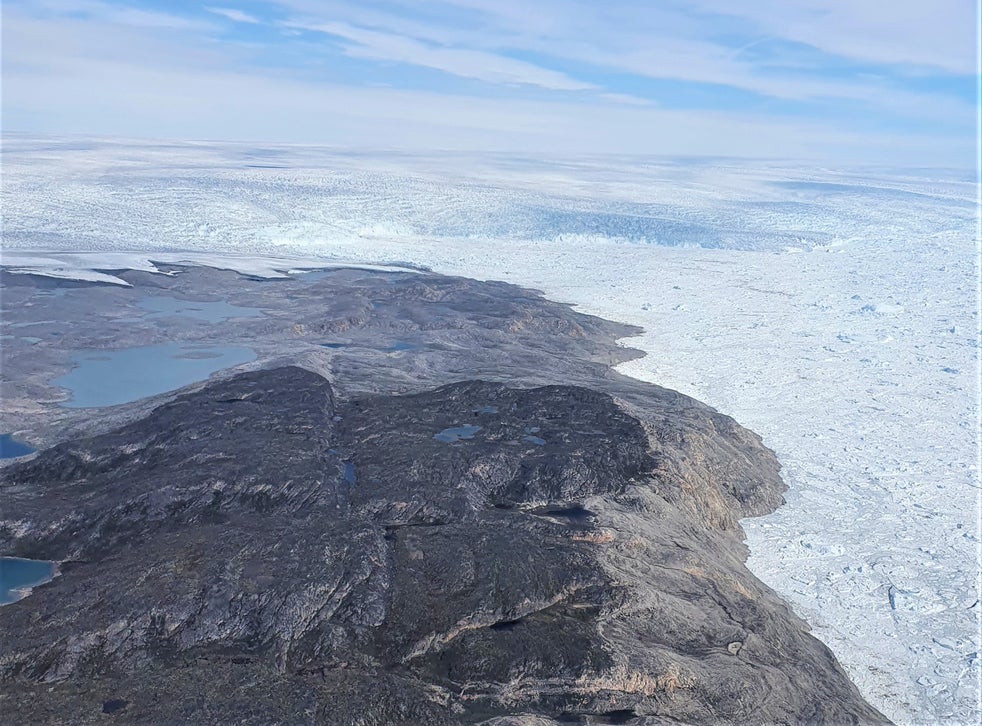Greenland’s largest glaciers nearing rates of melt expected in ‘worst-case scenario’
Greenland’s three biggest glaciers added the equivalent of around 8mm to global sea levels from 1880 to 2012, study says

Using a combination of aerial photographs and field data, the study found that current rates of mass loss from Greenland’s three largest glaciers are higher than once thought.
The melting of these three glaciers added the equivalent of around 8mm to global sea levels from 1880 to 2012, according to the research.
Previous had estimated that the same three glaciers would contribute 9-15mm to global sea levels by 2100 under a “worst-case scenario”.
The Greenland ice sheet is a mass of frozen freshwater sitting on the island of Greenland that is around 1.7m square kilometres in size. This is about three times the size of Texas.
As a result of climbing air and ocean temperatures, the ice sheet is losing mass each year. The loss of mass from Greenland’s glaciers is, in turn, causing sea levels to rise.
The research, published in , focuses on the “big three” glaciers in Greenland: Jakobshavn Isbræ, Kangerlussuaq Glacier and Helheim Glacier. These glaciers together hold enough ice to raise sea levels by around 1.3 metres, if they melted completely.
It found that the amount of sea level rise from the melting of these three glaciers is already nearing rates previously expected under a future “worst-case” scenario.
This suggests that, if the world were to see extremely high emissions in the coming decades, ice loss from Greenland’s glaciers would be considerably higher than previously projected, explains study author Prof Jonathan Bamber, a glaciologist at the University of Bristol.
…click on the above link to read the rest of the article…